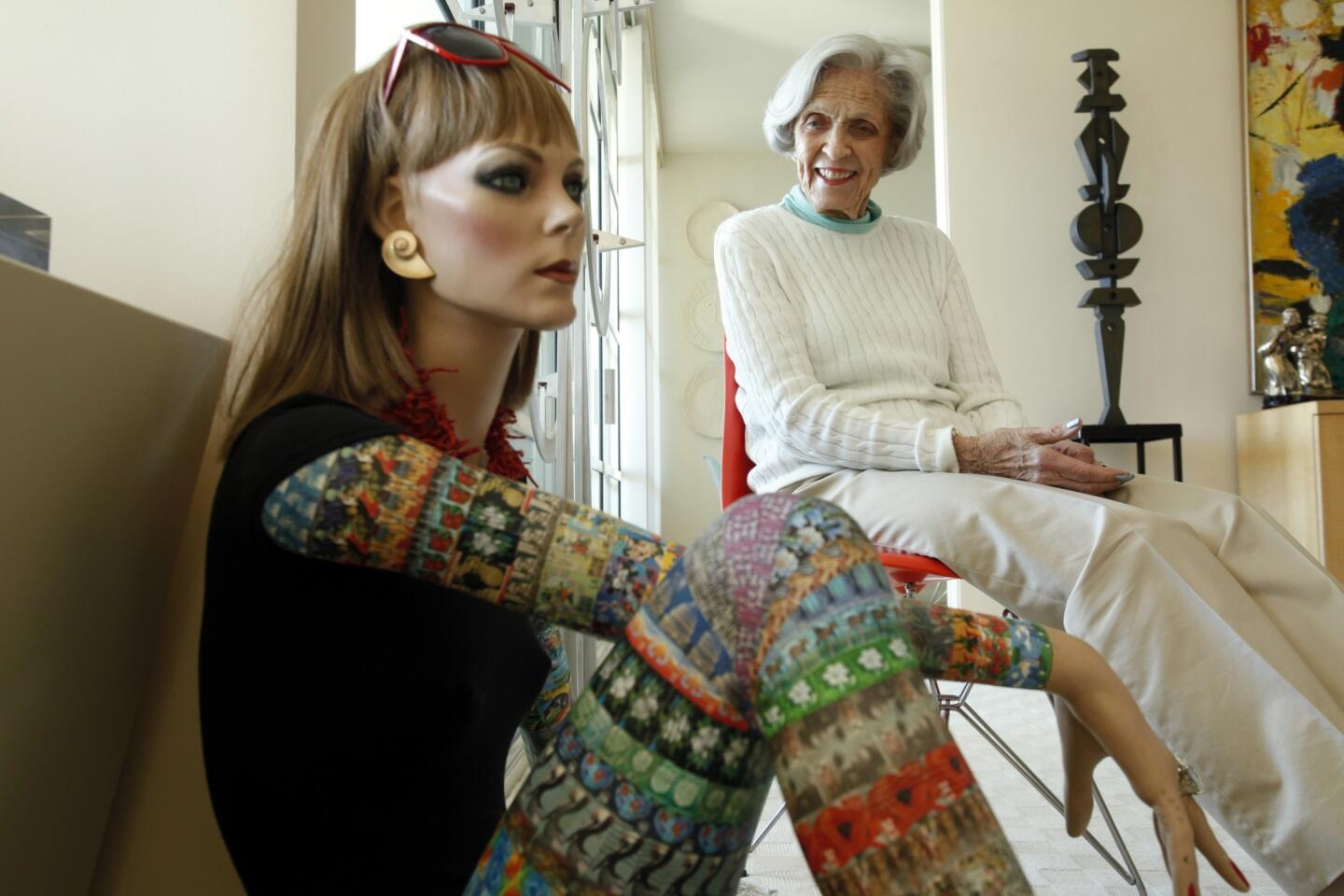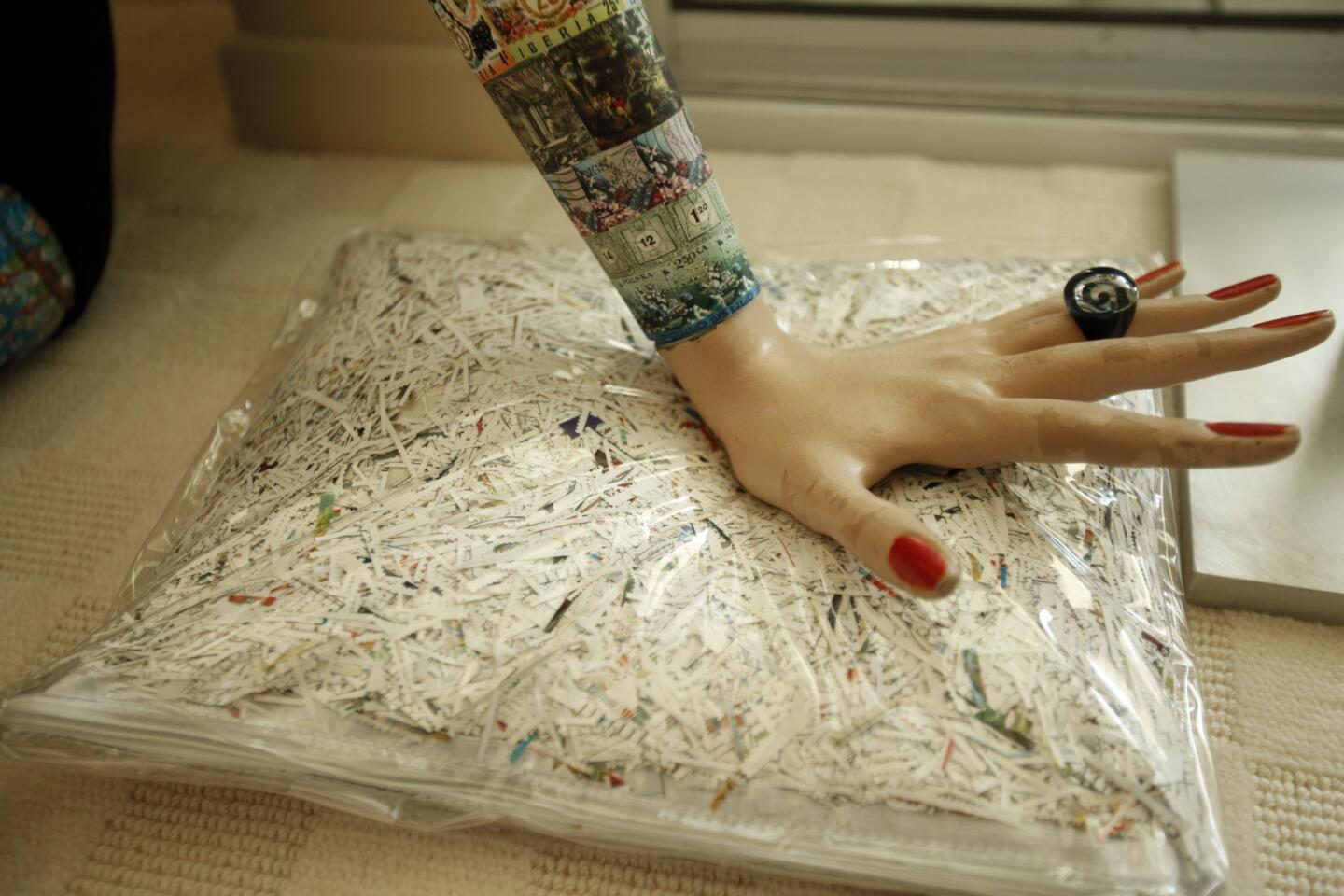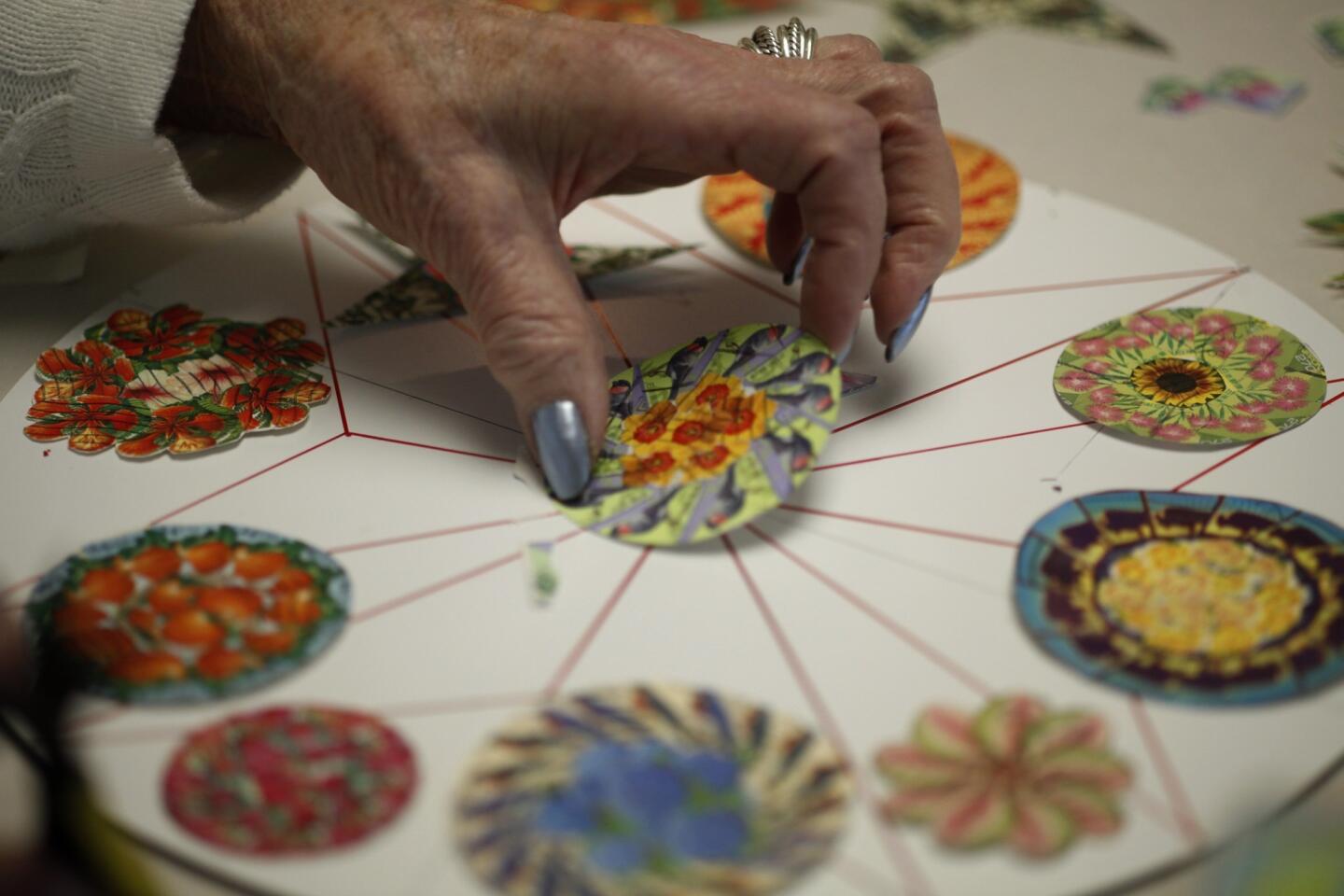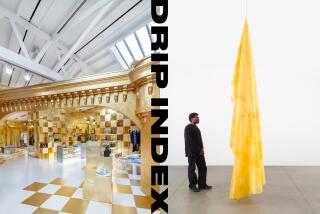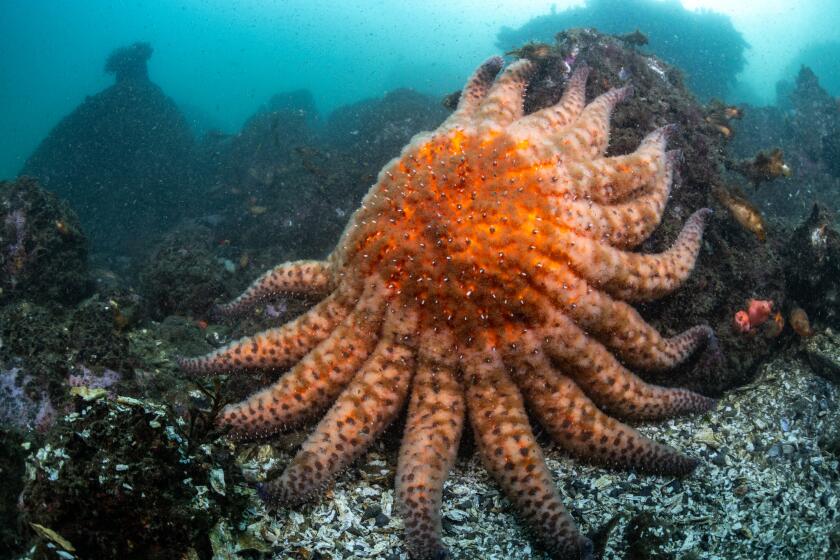This stamp artist makes all of the postage do
- Share via
Perhaps the U.S. Postal Service should commission a stamp honoring Shirley Familian.
For 25 years she has been honoring mail carriers everywhere by turning canceled postage stamps into art.
Friends from around the world clip the stamps from envelopes and send them to Familian, who patiently sorts them, stores them in zip-lock pages and then uses them to create fanciful designs that have a nearly hypnotic quality.
She’s now 93, and a three-month exhibition of her work has opened at the Los Angeles Craft & Folk Art Museum. Titled “Shirley Familian: 19,275 Stamps,” the show features 14 hanging pieces and seven stamp-covered objects, including a skateboard, an iron and a teapot.
“When I was a little girl, I made paper dolls and thought that when I grew up I’d be a dress designer,” said Familian, who lives in Westwood.
Instead, when she graduated from the University of Washington with an art degree, she married a sailor and started a family.
Her husband was Burton Baskin, who sold men’s shirts and ties before going into business with her brother, Irv Robbins, who was operating a successful ice cream parlor in Glendale.
Robbins opened his own ice cream store in Pasadena before the two decided to merge their growing string of ice cream shops.
They flipped a coin to decide whose name came first, and Baskin won. To make their chain stand out, they advertised “31 flavors” — one for each day of the month.
Familian, who remarried after Baskin died in 1967, was more interested in art — and once her children were in school, she threw herself into it.
Later, she experimented with rubber stamping, “extended doodles” drawn continuously on 50-foot rolls of paper, fabric painting she called “rug art” and sculpture — creating coral-like figures out of thousands of soda can pull-top tabs.
A lifelong stamp collector, Familian said she has always admired the designs printed on tiny gummed postage labels.
She discovered that she could turn stamps into art when she decided to decorate a step-stool for her 2-year-old granddaughter to use while washing her hands. Bella Bronson is now 24, and the stool still sits in Familian’s home.
From a distance, the stool is ablaze with color. It is only when viewed up close that it becomes apparent the designs covering it were created from stamps.
Turning stamps into artwork, though, takes far more work than just categorizing them by color and design and then soaking them in water to separate them from their envelopes.
Familian uses her kitchen as her art studio and its sink for the soaking process. After they’ve dried, she cuts off their perforated edges and sets them aside.
She uses small scissors to cut the portion of the stamp she intends to use in whatever design she is creating. The backs of the stamps are then glued onto whatever surface she’s selected. Finally, the finished design is coated to give it a protective covering.
“It takes a lot of patience,” she says.
Over the decades Familian has sold only one of her stamp-art pieces. “I always wanted to have a collection to show in a gallery,” she explained.
The three-month exhibition at the museum could change that, however.
But missing from the exhibition will be “CoCo,” a life-size mannequin Familian said she “tattooed” with hundreds of stamps on the leotard-clad figure’s arms and legs. The mannequin sits near a patio door; one of its hands rests on a clear plastic pillow that is stuffed with thousands of perforated stamp edges saved by her assistant of 10 years, Maite Deen.
Museum officials say the exhibition’s title reflects Familian’s “precise count and arduous indexing of each postage stamp that she used in this collection of work.”
“There are other artists out there who utilize stamps,” said Suzanne Isken, the museum’s executive director. “But you can see Shirley’s growth in her work over the years.”
Now a fit 93, Familian acknowledged she doesn’t even need reading glasses to do her stamp work. She exercises three days a week at a gym and regularly eats the ice cream her brother and husband helped popularized.
“My favorite is Rocky Road,” she said.
And, yes, even though the chain was sold to new owners in 1967, it’s Baskin Robbins’ Rocky Road, naturally.
More to Read
Sign up for Essential California
The most important California stories and recommendations in your inbox every morning.
You may occasionally receive promotional content from the Los Angeles Times.
